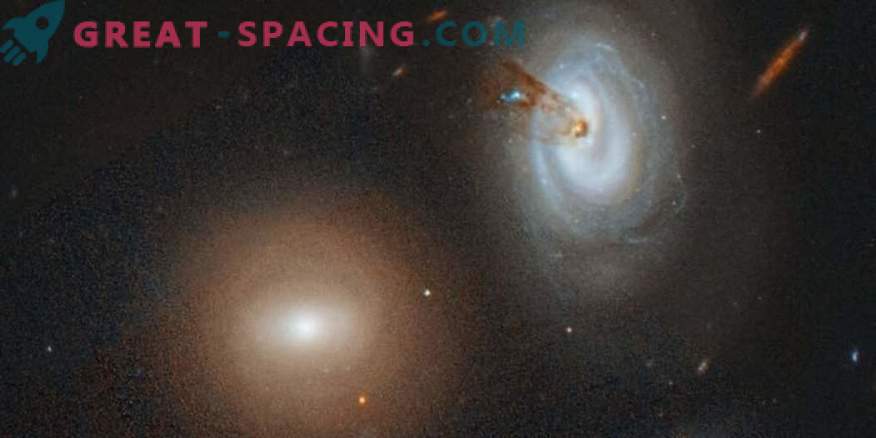
The spiral galaxy D100 (right in the corner), captured by the Hubble Space Telescope, loses gas when it falls to the center of the galaxy cluster of Hair of Veronica
A new study demonstrates the galaxy in which the gas ended. The story is quite typical: a galaxy is forming, and with the advent of new stars, its spiral arms are stretched and bent. But then the problem arises if it is too close to the center of the nearest galactic cluster. The cluster pumps the gas out of the galaxy until it loses its arms and the ability to create new stars.
This is exactly what happens with the D100 galaxy in Veronica's massive galactic Volos cluster. Photographs of the Hubble Space Telescope allowed scientists to view the phenomenon in unprecedented detail. The galaxy especially clearly shows the process that is widespread in massive clusters, where the star birth ceases and the galaxy becomes dead. The spiral arms disappear along with the gas, leaving the old stars.
A sad fate is in store for every galaxy that will risk approaching the dense center of a massive cluster. During the dive, the galaxy passes through an internal material that exceeds its own in density. It repels gas and dust (fuel for the birth of stars), and the galaxy loses all the gas and slowly dies. In Veronica's Hair Cluster, gas loss has affected many galaxies, but in D100 the process looks unique. For example, the galaxy's long and thin tail extends nearly 200,000 light years. In addition, this tail span covers 7000 light years.
It is also surprising that the galactic tail appears smooth and shows surprisingly smooth edges. Interestingly, nothing like this has ever been observed in computer simulations. Real-time galaxies that have undergone a process usually seem erratic. Smooth edges hint that the magnetic field that creates the threads plays a significant role in tail formation.
The longest bright tail was noticed in 2007 using the Subaru telescope in Hawaii. But a review from the Hubble telescope was needed to confirm that hot gas is a sign of stellar formation. In observations, Hubble did not find as many stars in the tail as scientists had suggested. The data indicates that the gas loss process began at the edge of D100 and is approaching the center.
You can admire the possible future of the D100. There are photos of the galaxy D99, which went through the same strong gas losses. All gas pumped from 500 million to 1 billion years ago, and the spiral structure almost disappeared. A few hundred million years, the D100 can repeat this fate.











































